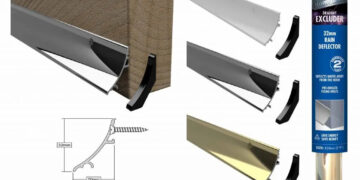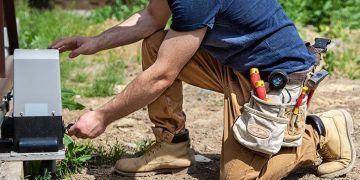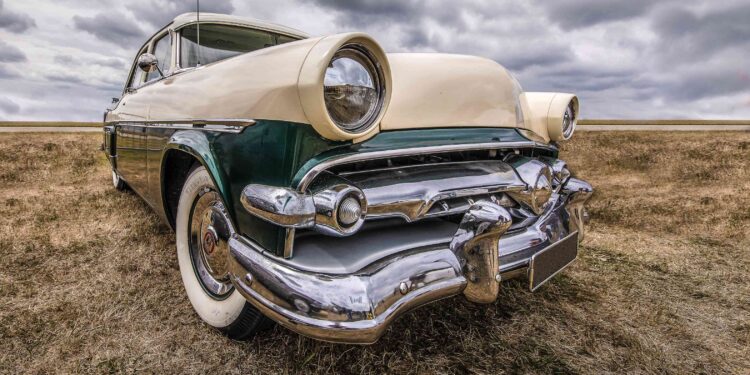Classic car restoration is a remarkable art form that combines meticulous craftsmanship, advanced techniques, and a deep passion for preserving automotive history. For car enthusiasts and collectors, the restoration of a classic car is more than just a mechanical process—it’s a labour of love that connects them to the past while breathing new life into iconic vehicles. In the UK, where automotive history is rich and diverse, classic car restoration has become a significant part of the motoring culture, attracting skilled professionals and passionate hobbyists alike.
This guest post will explore the multifaceted world of classic car restoration, from its importance to the step-by-step process and the role of skilled craftsmen. We’ll also delve into the challenges faced during restoration, the rise of classic car restoration workshops in the UK, and why investing in such projects is an endeavour that continues to attract enthusiasts from all walks of life.
Why Classic Car Restoration Matters
The restoration of classic cars is vital to preserving automotive history. Many of these vehicles are not just cars—they are symbols of a bygone era, a reminder of the craftsmanship, innovation, and engineering that defined their time. Restoring a classic car not only maintains its historical significance but also ensures it can be enjoyed for years to come.
Classic cars are often one-of-a-kind, whether they are rare models from well-known manufacturers or unique custom builds from small, independent garages. Restoring these vehicles gives them a second life and keeps them on the road, where they can be appreciated and enjoyed by future generations. In the UK, where many classic car enthusiasts are passionate about their automotive heritage, this dedication to restoration is evident in the thriving classic car market and numerous events celebrating vintage vehicles.
Moreover, restoration is not just about nostalgia. For many, it’s also about the thrill of working on an intricate mechanical and design project, transforming an old, dilapidated car into something beautiful and functional once again. The process requires a high level of skill and patience, ensuring that each piece of the vehicle is restored to its original condition—or in some cases, upgraded for modern safety and performance standards.
The Restoration Process: A Step-by-Step Guide
Restoring a classic car is a meticulous process that often involves several stages, each requiring the expertise of skilled professionals. While the specifics of each restoration can vary depending on the make and model of the car, there are several key stages that most restorations follow:
1. Assessment and Planning
Before any work begins, a thorough assessment of the car is essential. Restoration specialists will evaluate the condition of the vehicle, identifying areas of rust, damage, or parts that need replacing. This is a crucial stage, as it allows the restoration team to set realistic goals and develop a comprehensive plan. The plan will include timelines, budget considerations, and an outline of the specific work required.
During the planning stage, the owner and restoration team will discuss what level of restoration is desired. Some enthusiasts may want an exact, factory-authentic restoration, while others may opt for modifications that enhance the car’s performance or appearance. This decision often depends on the car’s rarity, its intended use (e.g., show car vs. daily driver), and the owner’s personal preferences.
2. Disassembly and Stripping
Once the restoration plan is in place, the disassembly process begins. Every part of the car is carefully removed, with each component carefully labelled and stored. This process often involves stripping down the car to its bare frame, which can reveal hidden issues such as rust or structural damage. The goal is to thoroughly inspect every part of the vehicle, ensuring that nothing is overlooked during the restoration.
Many classic car restoration projects involve repairing or replacing the car’s body panels, frame, suspension, and engine components. Some cars, particularly those with a lot of rust or damage, may require extensive work to restore structural integrity.
3. Bodywork and Metalwork
The body of a classic car often takes centre stage during the restoration process. This is where skilled metalworkers and bodywork specialists work to repair or replace damaged panels, remove rust, and restore the car’s original lines and contours. In many cases, this step involves welding, sanding, and priming the body to ensure that it’s smooth, straight, and free of imperfections.
Rust repair is one of the most common challenges in classic car restoration, particularly for vehicles that have been stored in damp conditions or driven in harsh climates. In the UK, where many classic cars were subject to road salt in winter, rust is a common issue. Skilled metalworkers use advanced techniques to carefully remove rust and treat affected areas to prevent future corrosion.
4. Repainting and Finishing Touches
After the bodywork is completed, the car is prepared for repainting. This stage involves applying layers of primer, colour, and clear coat to restore the vehicle’s original finish—or, in some cases, update it with a custom colour scheme. Classic cars often feature striking colours, with many owners opting to retain the vehicle’s original hue for authenticity. Others may choose to personalise the car with new colours or finishes that complement its overall look.
This is also when the final finishing touches are added, including chrome accents, trim, and other cosmetic details that help give the car its unique character. The final result is a beautifully restored vehicle that looks as good as it did when it first rolled off the production line.
5. Mechanical Restoration and Upgrades
Once the body is restored, attention turns to the mechanical systems that power the car. This includes rebuilding or replacing the engine, transmission, suspension, and braking systems. Restoring the mechanical components is crucial for ensuring that the car runs smoothly and safely.
In some cases, owners may choose to upgrade certain systems for improved performance or safety. For example, replacing outdated brakes with modern, more efficient systems or adding air conditioning for comfort. These upgrades are often done in a way that preserves the car’s vintage appeal while ensuring it can handle the demands of modern driving.
6. Final Assembly and Testing
The final stage of the restoration process involves reassembling the car and conducting extensive testing. Every component is carefully reinstalled, and the car is thoroughly tested to ensure it operates as intended. This stage is critical to ensure that everything is working properly—from the engine to the electrical systems, lighting, and brakes. Once everything is functioning as it should, the car is ready to be enjoyed by its owner.
Challenges in Classic Car Restoration
Classic car restoration is not without its challenges. One of the biggest hurdles faced by restoration professionals is sourcing rare or discontinued parts. Many classic cars were produced in limited quantities, and finding authentic replacement parts can be time-consuming and expensive. In some cases, restoration specialists may need to fabricate custom parts to ensure that the car is restored to its original condition.
Another challenge is balancing originality with modern upgrades. While purists may insist on maintaining a vehicle’s original components, others may want to add modern touches for improved performance, comfort, or safety. The challenge lies in finding a balance that respects the car’s heritage while still meeting the expectations of the owner.
Lastly, the sheer amount of time and skill required for a complete restoration means that the process can be costly. Classic car restorations often take several months or even years to complete, and the cost can vary widely depending on the extent of the work. However, for many enthusiasts, the cost is well worth it when they get to drive a beautifully restored classic car that they can enjoy for years to come.
The Rise of Classic Car Restoration in the UK
In recent years, classic car restoration has seen a resurgence in the UK, with a growing number of enthusiasts and collectors eager to restore and preserve vintage vehicles. The UK has a rich automotive history, with iconic manufacturers such as Rolls-Royce, Aston Martin, and Jaguar producing some of the world’s most sought-after classic cars. As a result, the demand for skilled restoration services has increased, leading to the rise of specialist restoration workshops across the country.
These workshops often employ a team of craftsmen with expertise in various areas, including bodywork, mechanical repairs, and electrical systems. Many of these specialists have decades of dent repair experience and a deep understanding of the intricacies of classic cars, which is essential for a successful restoration. The UK’s classic car community also benefits from a wealth of events, such as vintage car shows and auctions, where enthusiasts can network and find new projects.
Conclusion
Classic car restoration is a passion-driven process that requires a unique blend of skill, knowledge, and love for vintage vehicles. Whether you’re restoring a rare collector’s item or simply breathing new life into a beloved car, the restoration process is a rewarding journey that brings timeless vehicles back to their former glory. In the UK, the art of classic car restoration continues to thrive, thanks to the dedication of skilled craftsmen and the growing community of automotive enthusiasts. For anyone with a passion for cars, restoring a classic is more than just a project—it’s a celebration of history, craftsmanship, and the joy of motoring.














































